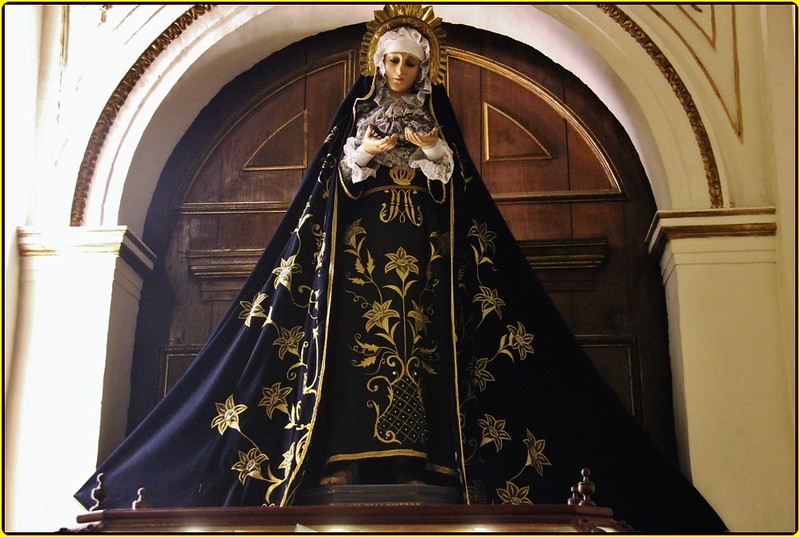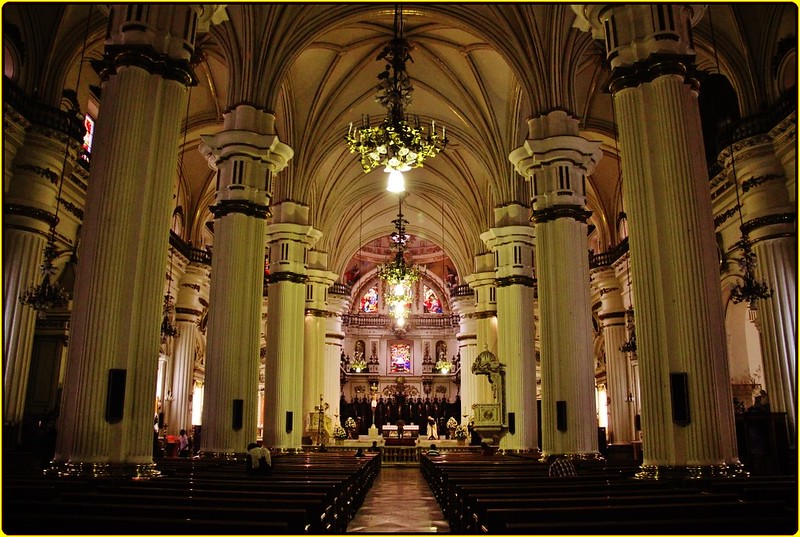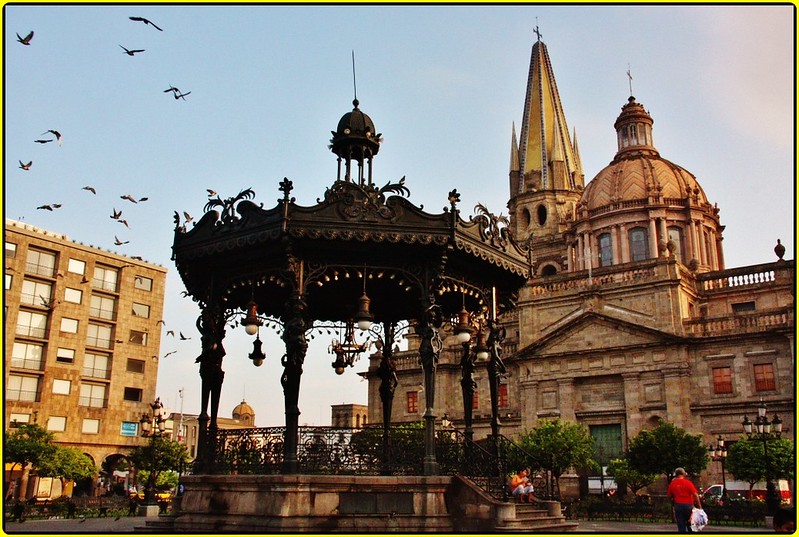Dia de la Virgen de Guadalupe
A Festival Weaving Faith, Fervor, and Mexican Identity
2026/12/10 - 2026/12/11
Every December 12th, all of Mexico pulsates with a unique blend of religious devotion and cultural celebration. As millions honor Our Lady of Guadalupe, the Basilica of Our Lady of Guadalupe in Mexico City becomes the epicenter of this nationwide festival, drawing over 5 million pilgrims from across the country and beyond. This fervent expression of faith, where indigenous traditions intertwine with Catholic customs, offers a precious glimpse into the core of Mexican spirituality and national identity.
Main Attractions
The Grand Pilgrimage
As dawn breaks on December 12th, the streets of Mexico City tremble with the footsteps of countless pilgrims heading towards the Basilica. The air fills with the beautiful melody of "Las Mañanitas," a traditional Mexican birthday song that devotees sing to the Virgin. The square in front of the Basilica transforms into a sea of flickering candles, their warm light illuminating faces full of determination and faith. Amidst the sweet, earthy scent of copal (resin) incense, the fragrance of millions of roses offered as tributes mingles in the air.
All-Night Vigil and Mass
As night falls on December 11th, the Basilica and its surroundings come alive with an all-night vigil. Pilgrims huddle in blankets, their breath visible in the cool night air as they await the stroke of midnight. The atmosphere is tense with anticipation. At midnight, a thunderous chorus of "Long live Our Lady of Guadalupe!" erupts, followed by the solemn tones of the midnight Mass. The following day, Masses are held hourly, each accompanied by the rich sounds of mariachi bands playing devotional hymns.
Feast of Flavors
This festival is a feast for the soul and the palate alike. The streets are filled with the savory aroma of tlacoyos being grilled. Tlacoyos are traditional oval-shaped patties made from blue corn dough, stuffed with fava beans or other legumes, and topped with tangy nopales (cactus pads). Their unique shape and aroma add to the festive atmosphere. Food stalls offer steaming cups of champurrado (a thick, warm chocolate drink) to soothe weary pilgrims. For those with a sweet tooth, buñuelos are popular. Buñuelos are a traditional dessert made of thin, fried dough with a crispy texture. They are drizzled with piloncillo syrup. Piloncillo syrup is a sweet syrup made by melting piloncillo, which is unrefined sugar molded into a cone shape, and has a uniquely deep flavor. When this syrup is poured over buñuelos, it creates a taste that is both nostalgic and fresh. These flavors tell the story of Mexico's rich culinary culture, blending indigenous ingredients with Spanish influences.
Cultural and Historical Background
The Day of Our Lady of Guadalupe commemorates the miraculous event said to have occurred in December 1531 on the hill of Tepeyac near Mexico City. On this day, the Virgin Mary is said to have appeared before Juan Diego, an indigenous convert, entrusting him with an important mission. According to tradition, the Virgin told Juan Diego to "build a church here" and as proof, miraculously imprinted her image on his tilma (cloak). This tilma is still on display at the Basilica of Guadalupe, where pilgrims from around the world come to witness its mystical allure. This event had a profound impact on Mexican history and culture, catalyzing the fusion of indigenous and European religious traditions and forming the basis of a new national identity.
For Mexicans, Our Lady of Guadalupe is more than just a religious figure. She symbolizes national identity itself and is affectionately called "La Morenita" (The Little Brown One). Her brown skin embodies the cultural fusion of indigenous people and Spanish colonizers, giving Mexicans a reason to take pride in their history and roots. This festival transcends social and economic differences, offering a special time for millions to share their faith and cultural pride. Many pilgrims walk long distances to reach the Basilica, offering prayers for themselves and their families. In this way, the festival fosters both personal devotion and a sense of community unity.
Furthermore, this festival is deeply connected to Mexico's independence movement. In 1810, Father Miguel Hidalgo, a leader of the independence movement, carried a banner depicting Our Lady of Guadalupe, and she became widely recognized as a symbol of freedom and hope. Thus, the Day of Our Lady of Guadalupe is not just a religious event, but also a day for Mexicans to celebrate their history, culture, and hope for the future.
Participant Voices
I've been making the pilgrimage to the Basilica every year since I was a child. This year, to fulfill a vow I made when my mother recovered from cancer, I walked 30 kilometers from my home. The journey was grueling, but with each step, I felt closer to Our Lady. As I approached Mexico City, I was amazed to see thousands of other pilgrims joining the procession. The air was filled with prayers and songs, creating a tapestry of faith. When I finally reached the Basilica, my feet were blistered and my body exhausted, but as I looked up at the image of Our Lady, I felt an overwhelming sense of peace. In that moment, all the pain disappeared, replaced by pure gratitude.
I was overwhelmed by the sheer number of people, but what struck me most was the joy and sense of unity that permeated the air. An elderly woman noticed my confusion, took my hand, and guided me. "Today, we're all family," she said kindly. She shared her tamales with me. Tamales are a traditional Mexican dish made of corn dough filled with various ingredients, wrapped in banana leaves or corn husks, and steamed. As the warm, comforting masa (corn dough) melted in my mouth, she explained the deep significance of the tilma (the cloak worn by Juan Diego). By the end of the day, I felt like I had touched something profound. It was an experience of cultural connection that transcends borders and a realization of the universal human desire for faith and belonging.
Fun Facts
- Juan Diego's tilma (the cloak worn by Juan Diego), on which the image of the Virgin is said to be imprinted, is made of agave fibers and should have deteriorated within 20-30 years. Yet, it remains intact after nearly 500 years, defying scientific explanation.
- The Basilica of Our Lady of Guadalupe is the most visited Catholic pilgrimage site in the world, surpassing even the Vatican, with approximately 20 million visitors annually.
- For the 2009 festival, a 22-kilometer-long rosary was created, requiring 600 volunteers to carry it to Mexico City.
- The eyes in the image of the Virgin on the tilma are said to reflect what Juan Diego saw in 1531, and some claim that modern technology has revealed microscopic images in the eyes, including that of Juan Diego himself.
Festival Dates
The Day of Our Lady of Guadalupe is celebrated annually on December 12th, with festivities often beginning on the evening of December 11th.
The event schedule is subject to change. Please check the official website for the most up-to-date information.
Media
Information
| Name | Dia de la Virgen de Guadalupe |
| Country | Mexico |
| Area | |
| Date | 2026/12/10 - 2026/12/11 |
| Link |
Upcoming Festivals
Las Posadas Mexico
The Luminous Quest for Sacred Shelter
2025/12/22Noche de Rabanos (Night of the Radishes) Mexico
A celebration blending art, farming heritage, and cultural traditions
2025/12/23Chant of the Sybil on Majorca Spain
A Medieval Prophecy Echoes Through Majorcan Christmas
2025/12/23‘Hatajo de Negritos’ and the ‘Hatajo de Pallitas’ Peru
A Christmas Festival of Rhythm, Faith, and Afro-Andean Heritage in Peru’s Ica Region
2025/12/24Harbin International Ice and Snow Sculpture Festival China
A Frozen Wonderland Where Art and Adventure Merge
2025/12/24Takanakuy Peru
The Andean Festival of Reconciliation by Fist—How Confrontation Creates Year-End Peace and Bonds
2025/12/27Els Enfarinats Spain
Spain's Flour-Powered Rebellion
2025/12/30New York New Year’s Day United States
A Dazzling Start in the City That Never Sleeps
2025/12/31Tournament Roses Parade United States
A New Year's Celebration of Flowers, Music, and Community
2026/01/01Kaapse Klopse(Cape Town Minstrel Carnival) South Africa
South Africa’s Most Vibrant New Year Carnival of Color, Rhythm, and Pride


